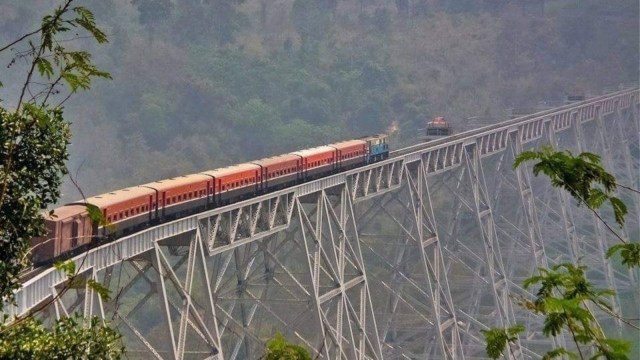Stay updated with the latest - Click here to follow us on Instagram
Symbol of British ambition in Asia: Myanmar’s Gokteik Bridge, once tallest in the world, toppled by war
Spanning 2,260 feet across a gorge in the rugged Shan hills, the viaduct towered 320 feet above the valley floor, making it the longest railway trestle in the world when it opened in 1901
 Gokteik bridge in Myanmar (ICS Travel Group/Facebook)
Gokteik bridge in Myanmar (ICS Travel Group/Facebook) The Gokteik Bridge, once the tallest railway trestle in the world and a colonial-era symbol of British ambition in Asia, has been destroyed in Myanmar’s ongoing civil war. Its collapse is not only an architectural loss but the end of one of the more improbable stories of empire, engineering, and resistance.
Spanning 2,260 feet across a gorge in the rugged Shan hills, the viaduct towered 320 feet above the valley floor, making it the longest railway trestle in the world when it opened in 1901. Built in just nine months by the Pennsylvania Steel Company, the structure was meant to be part of a grand plan: a railway linking Rangoon’s port to Kunming, China, and opening up what British officials believed were the vast, untapped riches of Yunnan.
The bridge was itself a marvel. Steel components were shipped 10,000 miles (16093 km) from Pennsylvania to northern Burma, where British engineers supervised its rapid assembly across the gorge. And yet the viaduct never fulfilled the purpose for which it was built. The railway sputtered out at Lashio, well short of China, leaving Gokteik as what many later called a “bridge to nowhere.”
The failure had less to do with engineering than with politics. British planners, convinced of what historian Thant Myint-U has described as the “Yunnan Myth”—the belief that fabulous wealth lay just across the border—underestimated the complexity of the people who lived in Burma’s highlands. The Shan and Kachin communities had little interest in being folded into colonial schemes. As political scientist James C. Scott wrote in The Art of Not Being Governed, they mastered an “art of not being governed,” making themselves largely invisible to bureaucrats who tried, and failed, to bend the region to imperial designs.
Despite the bridge leading to nowhere, it was still an important part of Burma’s history.
Th During World War II it became a strategic target, a vital link in the Burma Campaign. In 1943, Allied bombers, including planes from the US Tenth Air Force, attacked it to disrupt Japanese supply lines.



- 01
- 02
- 03
- 04
- 05




























